Widespread deployment and adoption of electric trucks and buses in Pennsylvania will result in substantial benefits for the economy, public health, energy security, and the climate.
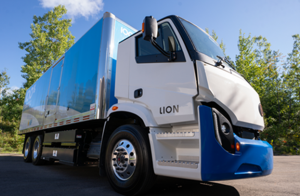
Multiple vehicle manufacturers have recently committed to full electrification of their product lines, and the federal government has renewed its focus on electrifying transportation. State policy action is needed to leverage this momentum for Pennsylvania. We have a finite window of opportunity to preserve U.S. leadership in the auto industry, meaningfully reduce emissions, and protect American manufacturing jobs. Electrifying trucks and buses is a critical step forward for Pennsylvania and the nation.
EVs Support Economic Growth
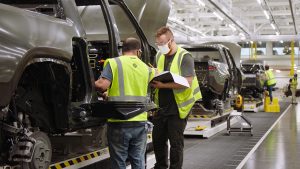
For the State of Pennsylvania, transportation electrification will generate renewed investments, job growth, and competitiveness in the global automotive market. Robust public investment and regulatory reform along the EV supply chain has the potential to create more than 500,000 jobs across the United States over a five-year period, according to a report by the Electrification Coalition and Securing America’s Future Energy. Nearly 154,000 of those jobs would stem from incentives that make it less expensive to buy medium- and heavy-duty EVs like trucks and buses. The United States also stands to gain 29,000 jobs through measures to expand charging infrastructure and energy storage. These are jobs that can be part of Pennsylvania’s future.
Auto manufacturers are already reimagining their vehicle portfolios, releasing new electric models, and investing in electric vehicle manufacturing in the United States, including in Pennsylvania.
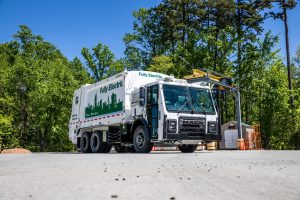
- Mack Trucks began taking orders in 2020 for its Mack LR Electric refuse truck, manufactured at its Lehigh Valley Operations plant in Macungie, Penn.
- Ford committed to invest $22 billion in EVs through 2025, has invested $700 million in its Rouge Center to build the electric F-150, and committed to becoming carbon neutral by 2050.
- Volvo North America is producing its VNR Electric Class 8 truck at its plant in Dublin, Va., and the company aims for its product range to be “fossil-free” by 2040.
- GM has committed $27 billion to electrification, with a goal of ending production of vehicles with internal combustion engines by 2035. The company is investing $3 billion to produce all-electric trucks, SUVs, and electric self-driving vehicles at its Hamtramck, Mich. plant. When the plant is fully operational, GM projects it will create 2,200 manufacturing jobs.
- Arrival, a global EV manufacturer, will build its second American “microfactory” in Charlotte, NC. The factory will produce electric delivery vans and is expected to create more than 250 new jobs. The company is establishing its North American headquarters in Charlotte, adding about 150 new employees and investing approximately $3 million towards the company’s new offices.
- Ford supported EV manufacturer Rivian with a $500 million investment to build an electric pickup truck. Amazon has ordered 100,000 electric delivery trucks – worth $700 million – from Rivian.
EVs Promote Energy Security
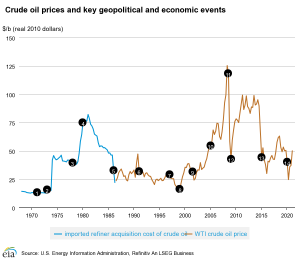
Because the fate of the U.S. economy is so closely tied to petroleum, the United States is forced to expend
tremendous resources to secure the word’s oil supply. The U.S. military spends $81 billion per year to protect oil infrastructure and oil transit routes. In addition to the financial drain, this puts the lives of our service members at risk to protect the flow of oil.
Electricity, on the other hand, is ubiquitous and domestically produced from a diverse array of energy sources. Electricity is also cheaper than gasoline and diesel fuel, and its pricing is far less volatile. According to the U.S. Energy Information Administration, even though domestic oil production has increased substantially in recent years, the global oil market is still heavily influenced by OPEC, a cartel of 13 petroleum-exporting countries in the Middle East, Africa, and South America. Crude oil prices are the primary driver of petroleum product prices, and crude oil prices react strongly to geopolitical and economic events, such as economic crashes, OPEC production cuts, and wars.
EVs Advance Public Health and Equity
Vehicles are a leading source of air pollutants that affect human health. Vehicle emissions contribute to the formation of ground-level ozone (smog), which can trigger health problems such as aggravated asthma, reduced lung capacity, and increased susceptibility to respiratory illnesses, including pneumonia and bronchitis.
Motor vehicles, particularly those used for freight, are also a major source of fine particulate matter. Particulate matter is linked to significant health problems, including asthma, chronic bronchitis, and heart attacks. Long-term exposure is likely to cause lung cancer. Low-income and minority communities are more likely to be located near highways and other transportation facilities that lead to negative health effects.
According to the American Lung Association, widespread adoption of electric vehicles by 2050 would result in an estimated $72 billion per year in health care savings nationally. In Pennsylvania alone, the annual benefits would include $2.4 billion in avoided health-impact costs, 206 premature deaths avoided, 2,399 asthma attacks avoided, and 10,814 lost work days avoided.
EVs Help Tackle Climate Change
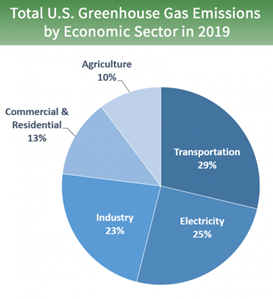
Transportation is the single largest source of GHG emissions in the United States. Life cycle GHG emissions of an EV are typically far lower than those of a comparable conventional vehicle. Medium- and heavy-duty (MHD) vehicles, including delivery trucks, delivery vans, tractor-trailers, transit buses, and school buses, represent approximately 11% of the vehicles on the road, but they produce about 29% of the GHG emissions that come from vehicles. That’s why the electrification of these vehicles is so critical to addressing climate change.
Electrification of medium- and heavy-duty vehicles will also be essential to Pennsylvania’s ability to meet its own climate goals. Executive Order 2019-01 set GHG-reduction goals for Pennsylvania, including a reduction of 24%
below 2005 levels by 2025, and an 80% reduction by 2050.
Policies to Advance Electrification of Trucks and Buses
Pennsylvania joined the Multi-State MHD Zero Emission Vehicle Memorandum of Understanding in 2020, pledging that at least 30% of all new trucks and buses sold in the commonwealth will be zero-emission vehicles by 2030, and 100% by 2050. To meet these commitments, Pennsylvania policymakers need to take the following actions:
- Support incentives, utility investments and state targets that will accelerate the electrification of trucks that travel along our highways and through our neighborhoods to deliver goods to our homes and businesses.
- Electrify public transit and school buses to provide clean, healthy ways for Pennsylvania residents to travel to and from school, work, and home.
- Invest in the development of MHD charging infrastructure to ensure that Pennsylvania does not miss out on the economic opportunities afforded by the electrification of transportation.
